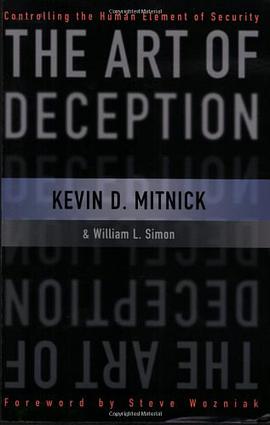城市个人安全手册 豆瓣
作者:
南都周刊
南方日报出版社
2006
- 9
这些天,我们希望能为每天穿行于城市的人们的平安做点什么,于是就有了这份个人安全手册。
触动这个想法的,是近日发生在广州的几起悲剧。23岁的邓哲玉、27岁的朱凤梅被飞车贼拖(摔)死,3岁的小湘妹被陌生人从天桥上摔死。在警方的犯罪记录里,也许这些都不是最恶劣的案件,但是对于当事人及其亲人来说,这无疑是人生最大的噩梦。
在讨论实施这个想法的时候,我们更进一步意识到,无论一个城市的治安状况如何,无论它处在哪个时段,每个人都需要关怀备至的安全提示。因为对于任何人来说,脆弱的生命都只能经受一次那样的打击。
因此,我们并不想讨论某个城市的治安是好还是坏,也不想比较哪个城市更安全。我们想要说,在任何时候,任何城市,你都应该有一份个人安全手册。
我们知道,就世界范围看,从短期来说,很多城市的犯罪率都在下降,但是就长期而言,尽管城市里的警察越来越多,犯罪率却越来越高。预防罪犯几乎是一个不可能完成的任务,因此人们才将重点转向预防受害,也就是当面临危险时,如何将个人损害降到最低。
让警察去打击犯罪行为,那只是事情的一个方面;动员个人安全防护,则变得越来越重要。
我们要强调的是,预防和打击犯罪从来都不只是警察的事情,ZF和市民还有很多系统性的工作要做。编撰安全手册只是这个系统中间的一个小小的环节,却是非常重要的一环。
在西方发达国家的大小城市里,各类安全手册摆放在各种公共场所,大量免费提供,人人触手可及。在我国,警方及其他公共部门也做了很多类似的工作,但是还远远不足,至少我们不能随时随地很方便地取到,甚至花钱也不能在报摊买到。我们所做的工作,就想起一个补充或者提醒的作用。
我们所依据的蓝本,是英国内政部公共关系部1994年版的《犯罪预防实用指南》。这是一个温馨而细腻的安全手册,思虑周全而逻辑严密。然而,它只是提供了思路,并没有囊括我们的全部具体情况。你现在看到的这个手册,则来自于我们记者的实地采集,来自当地警方和其他公共部门的大力支持,来自专家学者和地方媒体的大力帮助。
正所谓,真正的安全,总是来自每个人都伸出援手。
顺便要说的是,在选题会上,当我将英国12年前的那本个人安全手册中的一些条款读出来时,编辑们纷纷说,“这个我们就不要提了,太奢侈了”。比如,其中有一节要求男士们在公共场所举止正确,过马路不要跟在女士后面,不要老盯着女士看,等等,以免让她们感觉受到威胁。在我们这里,一份大众安全手册和一个绅士培养计划还是有区别的,难道在他们那里就合二为一了?
看来,要走的路,还有很长。
愿我们一路平安。
触动这个想法的,是近日发生在广州的几起悲剧。23岁的邓哲玉、27岁的朱凤梅被飞车贼拖(摔)死,3岁的小湘妹被陌生人从天桥上摔死。在警方的犯罪记录里,也许这些都不是最恶劣的案件,但是对于当事人及其亲人来说,这无疑是人生最大的噩梦。
在讨论实施这个想法的时候,我们更进一步意识到,无论一个城市的治安状况如何,无论它处在哪个时段,每个人都需要关怀备至的安全提示。因为对于任何人来说,脆弱的生命都只能经受一次那样的打击。
因此,我们并不想讨论某个城市的治安是好还是坏,也不想比较哪个城市更安全。我们想要说,在任何时候,任何城市,你都应该有一份个人安全手册。
我们知道,就世界范围看,从短期来说,很多城市的犯罪率都在下降,但是就长期而言,尽管城市里的警察越来越多,犯罪率却越来越高。预防罪犯几乎是一个不可能完成的任务,因此人们才将重点转向预防受害,也就是当面临危险时,如何将个人损害降到最低。
让警察去打击犯罪行为,那只是事情的一个方面;动员个人安全防护,则变得越来越重要。
我们要强调的是,预防和打击犯罪从来都不只是警察的事情,ZF和市民还有很多系统性的工作要做。编撰安全手册只是这个系统中间的一个小小的环节,却是非常重要的一环。
在西方发达国家的大小城市里,各类安全手册摆放在各种公共场所,大量免费提供,人人触手可及。在我国,警方及其他公共部门也做了很多类似的工作,但是还远远不足,至少我们不能随时随地很方便地取到,甚至花钱也不能在报摊买到。我们所做的工作,就想起一个补充或者提醒的作用。
我们所依据的蓝本,是英国内政部公共关系部1994年版的《犯罪预防实用指南》。这是一个温馨而细腻的安全手册,思虑周全而逻辑严密。然而,它只是提供了思路,并没有囊括我们的全部具体情况。你现在看到的这个手册,则来自于我们记者的实地采集,来自当地警方和其他公共部门的大力支持,来自专家学者和地方媒体的大力帮助。
正所谓,真正的安全,总是来自每个人都伸出援手。
顺便要说的是,在选题会上,当我将英国12年前的那本个人安全手册中的一些条款读出来时,编辑们纷纷说,“这个我们就不要提了,太奢侈了”。比如,其中有一节要求男士们在公共场所举止正确,过马路不要跟在女士后面,不要老盯着女士看,等等,以免让她们感觉受到威胁。在我们这里,一份大众安全手册和一个绅士培养计划还是有区别的,难道在他们那里就合二为一了?
看来,要走的路,还有很长。
愿我们一路平安。

